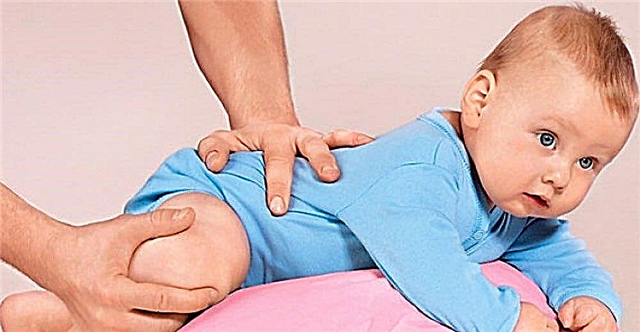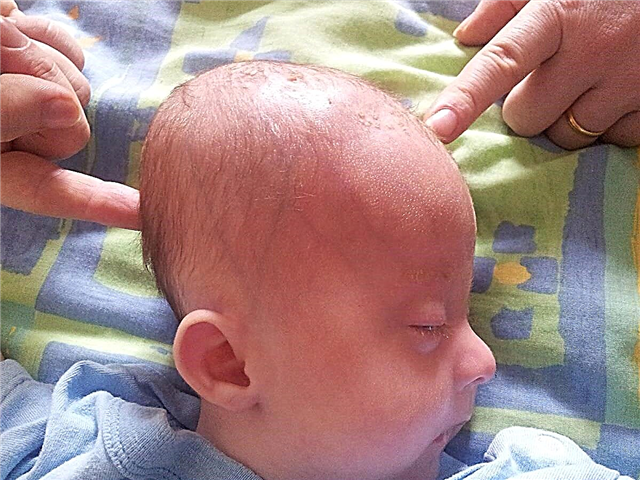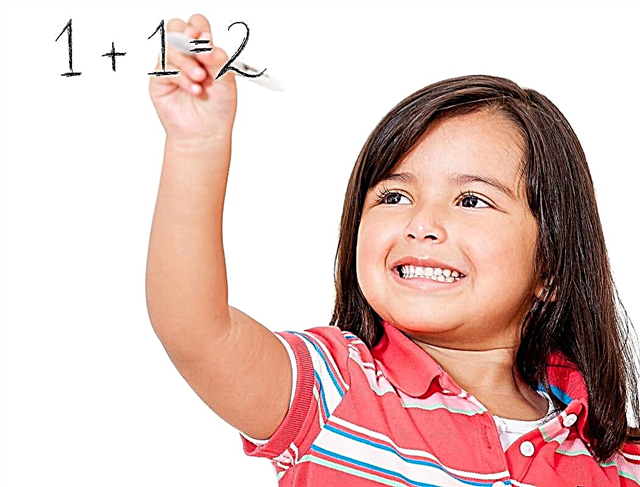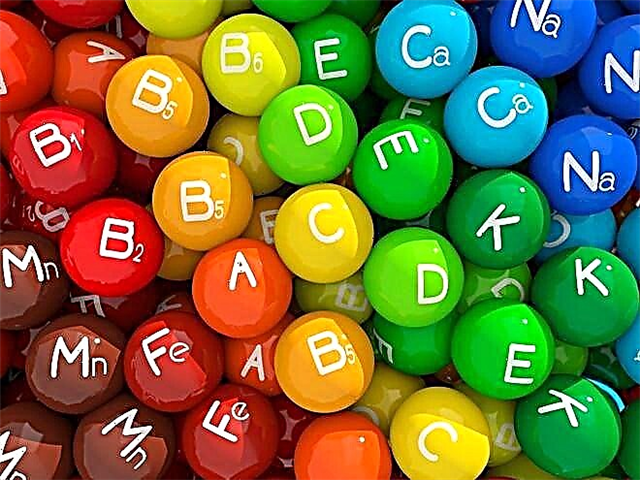Were you and your child at the doctor's office and left him with a diagnosis indicating a violation of the baby's muscle tone? Hypotension in a baby is not always a symptom of a serious illness, but, of course, you will have to follow the advice of the attending physician in order to make it easier for the baby to adapt to the new and frightening world around him.
Manifestations of muscle hypotension in infants
- In newborns, when trying to move the arms and legs, you will not feel resistance or the slightest tension in the muscles. And with normal muscle tone, it will be more difficult to unbend, since the tone is physiologically slightly increased.
- Flabby muscles can be seen on examination.
- Muscle weakness leads to disruption of the main joints of the limbs. When walking, the baby can sharply bend the leg at the knee back. The longer the muscles are relaxed, the stronger the load on the joints - elbows, knees, the more they are damaged.
- In addition, hypotonia in a child is manifested by difficulties in holding the head.
- The baby spreads the arms when you put it on the tummy, but does not lift it on them. He has no way to keep his weight.
- He gets tired quickly and falls asleep while breastfeeding, it is very exhausting for him.
- Try to "plant" the baby. Pull the handles slightly toward you. In low-toned babies, the arms will open immediately, the tummy will be rounded and the back will be hunched over.
- Does your baby “walk” when you hold him under the armpits and allow him to rest on a firm surface? If so, then the question of hypotension cannot be raised. If the baby bends its legs or the step movement is performed on bent legs, you should consult a neurologist.
What diseases are masked by low muscle tone?
Muscular hypotension in children can be expressed as a single pathological sign, and also exist in a group of other neurological syndromes.
- An isolated sign of hypotension manifests itself in the early stage of infantile cerebral palsy. But after the development of the disease, it is replaced by spasticity. Diffuse muscle hypotonia can be part of Werdnig-Hoffmann muscle atrophy in children.
- In combination with other neurological syndromes, it occurs in extensive strokes. For example, there will be no movement, there will be violations of sensitivity.
- Hypotonicity in infants, together with fasciculations and muscle atrophies, occurs in spinal muscular atrophy. To clarify the diagnosis, it is necessary to consult a geneticist.
- If you notice progressive movement disorders and sensory disturbances in children more on the palms and soles, and in other parts of the limbs, everything is normal, most likely the baby has polyneuropathy. A neurologist will help your child with this condition.
- In children of primary school age, diffuse disturbance of tone can be a symptom of multiple sclerosis.
Causes
 Muscle hypotension in children can be due to various reasons.
Muscle hypotension in children can be due to various reasons.
- The very first thing that can be assumed is perinatal encephalopathy. The complex term includes damage to the brain of a baby during pregnancy, most often due to prolonged oxygen deprivation. This disease is more susceptible to children born prematurely and immature.
- The second common cause is injury. Muscle hypotension can develop if something has injured the spinal cord laterally. Only a doctor can clarify the presence of an injury. Magnetic resonance imaging and radiography are often used.
- Infectious diseases (meningitis, encephalitis, poliomyelitis) are accompanied by a change in tone. It is important to know that "dead" polio vaccines are now being used. This means that it is impossible to get sick after being vaccinated with polio.
- Insufficient intake of vitamin D into the baby's body.
- Congenital hypothyroidism is also manifested by muscle hypotonia, since the necessary hormones are lacking. In addition, there may be mental and physical retardation, developmental delay.
- Mothers diagnosed with myasthenia gravis are at risk of having children with tonicity disorders.
One of the modern pediatricians, whose opinion is trusted by most moms and dads, is Dr. Komarovsky. In his articles, he says that pediatric neurologists are more "reinsured than actually revealing muscle hypotonia." He recommends staying calm anyway. “Serious neurological diseases occur in 4% of the child population. At the same time, only 2% of children need pills, ”said Evgeny Olegovich Komarovsky.
Is muscle hypotension treated?
Hypotension syndrome in the newborn is treated. Initially, it is necessary to examine the baby, to identify the root cause. If no serious health problems have been identified for the baby, you can start treating the isolated syndrome.
Treatment must be comprehensive and performed by professionals in the initial period.
Physiotherapy or gymnastics, massage, acupuncture, physiotherapy, aromatherapy and educational games are the basis of non-drug treatment.
The temperature in the room for the procedures should be comfortable so that the baby does not freeze or overheat. Do not perform treatments immediately after meals.
The point of application of therapeutic exercises will be the weakened muscles of the crumbs. It is necessary that the muscles of the arms and legs, as well as the muscles of the neck and back, be strengthened and accustomed to work.
 To do this, it is better to do gymnastics in the morning and afternoon hours, that is, at least twice a day, and preferably three.
To do this, it is better to do gymnastics in the morning and afternoon hours, that is, at least twice a day, and preferably three.
Dear parents, do not do tonic exercises before bedtime. And also one should not expect a quick effect, daily exercises should continue for at least two to three months.
Exercises you can do with your kids
- The child lies on the back, and you spread the child's arms to the sides and bring them back. Don't forget to talk to the baby. Repeat the exercise about 5-10 times.
- Let's modify the first exercise. Now we bring the handles to the head in turn, first up the left, and down the left and vice versa.
- "Box" the baby's hands. In this exercise, the extensor muscles are tense.
- Pulling up for toddler is a good workout for the flexor muscles. Grab the handles and pull the child towards you until he almost crouches down.
- Place the baby on the tummy. This is how he learns to hold his head. This is a natural exercise that will train your muscles.
- Lying squats are exercises that tone the leg muscles. Take the feet, pull the legs to the tummy. Let the baby strain his legs and try to push them back. Repeat the exercises three times.
- Jumping. Take the baby by the armpits, hold the head if he does not hold it. Let the baby rest on its legs and take steps. This exercise trains the legs, back and neck muscles.
Massage
 Massage with hypotension should be carried out in courses of ten sessions several times a year. Start by rubbing. They improve blood flow to the muscles, through a mild irritant effect, stimulate skin receptors, helping to build reflex arcs of tactile and osmotic reflexes. Rubbing movements begin from the tips of the fingers up to the large joints. If you rub the back, then the movements go from the buttocks along the back up to the neck and move along the shoulders to the upper part of the arms.
Massage with hypotension should be carried out in courses of ten sessions several times a year. Start by rubbing. They improve blood flow to the muscles, through a mild irritant effect, stimulate skin receptors, helping to build reflex arcs of tactile and osmotic reflexes. Rubbing movements begin from the tips of the fingers up to the large joints. If you rub the back, then the movements go from the buttocks along the back up to the neck and move along the shoulders to the upper part of the arms.
Now let's move on to kneading. Do everything carefully, do not deliver pain to the baby. Most often, the baby will be capricious during this stage. It is worth sharing the cry of a child when he is simply uncomfortable and when it hurts. You can gradually add light tapping and tingling on the muscles.
Again, do not apply severe painful irritation. Enough light but daily muscle stimulation to strengthen and tone up.
Other methods
Physiotherapy and acupuncture are carried out only with the appointment of a doctor and in most cases with hospitalization in a hospital.
Do not prescribe medications, decoctions of various herbs to your baby on your own!
Other types of hypotension
If everything is clear with general muscular hypotension, then what to do if your baby has gallbladder hypotension or hypotonic dyskinesia?
 Dear parents, gallbladder hypotension in a child is a fairly common diagnosis. Most often, you will find out about it after reading the protocol of ultrasound examination of the baby's abdominal organs. Do not be immediately scared and try to "cure" this ailment with drugs.
Dear parents, gallbladder hypotension in a child is a fairly common diagnosis. Most often, you will find out about it after reading the protocol of ultrasound examination of the baby's abdominal organs. Do not be immediately scared and try to "cure" this ailment with drugs.
Dyskinesias are functional diseases of the biliary system, they are not associated with anatomical abnormalities in the gallbladder and its ducts. Dyskinesia leads to indigestion, since there is a poor breakdown of substances into components for normal absorption and assimilation by the body.
There are three variants of biliary dyskinesia: hypotonic, hypertensive and mixed.
The causes of gallbladder hypotension in children are different.
Nutritional or alimentary reasons.
- for a baby - unbalanced nutrition of a nursing mother;
- for older children - the absence and irregular meals with hot dishes (soups, cereals);
- lack of breakfast;
- daily intake of fatty foods;
- frequent use by the child of tasty, but "junk" food. We include chips, cakes, chewing gum, fast food, sweet carbonated drinks to it.
Impaired control of the activity of the biliary tract by the nervous system... In this case, the child has an incorrect regulation of the frequency of contraction of the muscle fibers of the gallbladder itself and the main sphincter of Oddi. In addition to intestinal manifestations, a violation of vascular tone and low blood pressure, a violation of respiratory acts can be noted.
Parasites... Giardia - protozoa, which children become infected through objects contaminated with cysts (toys, spoons, mugs, pencils), poorly refined food and dirty unboiled water.
Psychological reasons.
You might think that your toddler doesn't have psychological problems because he doesn't have to deal with “important adult problems”. Quite often, the cause of psychological problems expressed in organic pathology in a child is quarrels and conflicts within the family, conflicts with peers. Symptoms of the hypotonic type of DVT can be divided into specific and additional.
Symptoms of the hypotonic type of DVT can be divided into specific and additional.
We will refer to specific ones:
- complaints of pain, often sharp, which appears after the child has eaten and disappears after half an hour;
- poor appetite, but with desire to eat. This is because the child has a taste of bitterness in his mouth (more often in the morning);
- after sweet and fatty foods, there may be vomiting, which brings relief and is not accompanied by fever and loose stools with mucus;
- bloating tummy, "pea" feces or loose stools, without mucus, often light or greenish.
Children cannot explain exactly what is bothering them. They can compensate for the bitterness in the mouth by drinking and eating sugary foods frequently, as well as frequent snacks.
Additional symptoms are expressed:
- frequent headaches;
- soreness when touched in the abdomen;
- violation of the rhythm of breathing (it is often superficial, excluding the participation of the abdomen during inhalation).
 The presence of such symptoms in a baby requires a specialist consultation. It may be necessary to undergo a series of examinations (ultrasound of the abdominal organs in different body positions; biochemical blood test, including ALT, AST, bilirubin with fractions; coprogram; for older children, duodenal intubation with provocative tests, radiography with a contrast agent is possible).
The presence of such symptoms in a baby requires a specialist consultation. It may be necessary to undergo a series of examinations (ultrasound of the abdominal organs in different body positions; biochemical blood test, including ALT, AST, bilirubin with fractions; coprogram; for older children, duodenal intubation with provocative tests, radiography with a contrast agent is possible).
See a doctor if your child has similar symptoms. This is necessary in order to exclude an emergency surgical pathology!
How can I help my baby?
- Compliance with a diet. No fatty fried foods, you need to reduce sweets, increase the amount of vegetables and fruits in boiled or pureed versions.
- Meals are frequent and fractional. There is no need to force the baby to eat the whole bowl of soup or porridge at a time, it is better to divide the portion into two meals.
- For an unobstructed outflow of bile, after consultation with a doctor, choleretic drugs can be given. In this case, it would be better to use cholekinetics of both plant (Gapabene) and synthetic origin (Allochol).
- It is impossible to achieve a lasting result only with diet and drugs. Physiotherapy and massage will help us with this. The massage should be aimed at toning the general muscle tone.
An active lifestyle of the baby will relieve him of bitterness in the mouth, as the drainage function will improve. You can do physical therapy on balls, swim.



